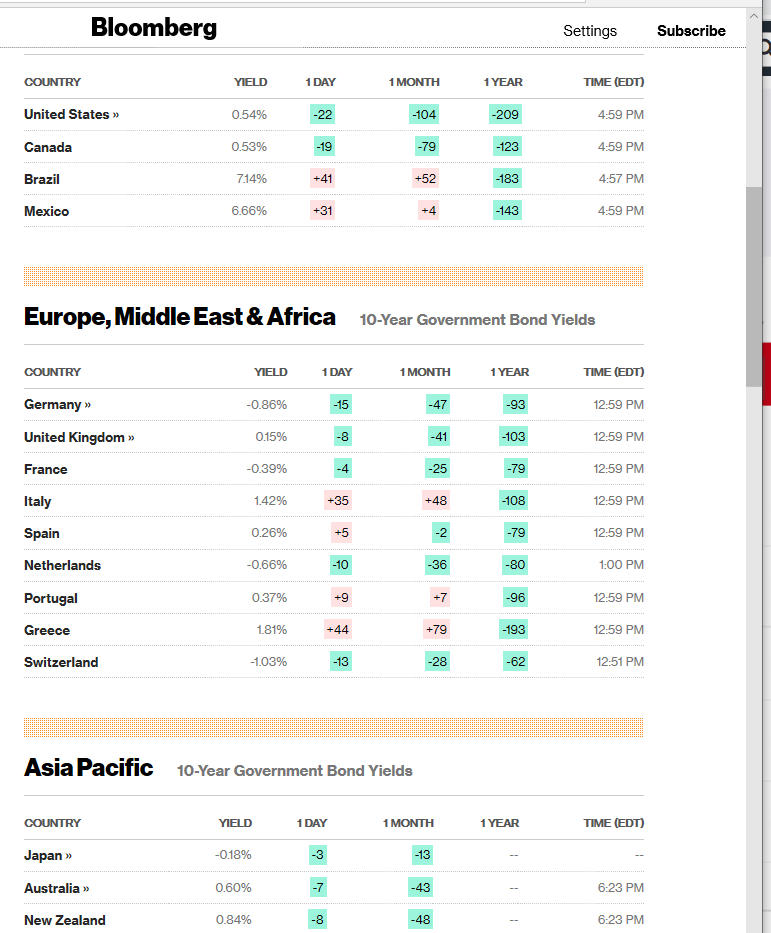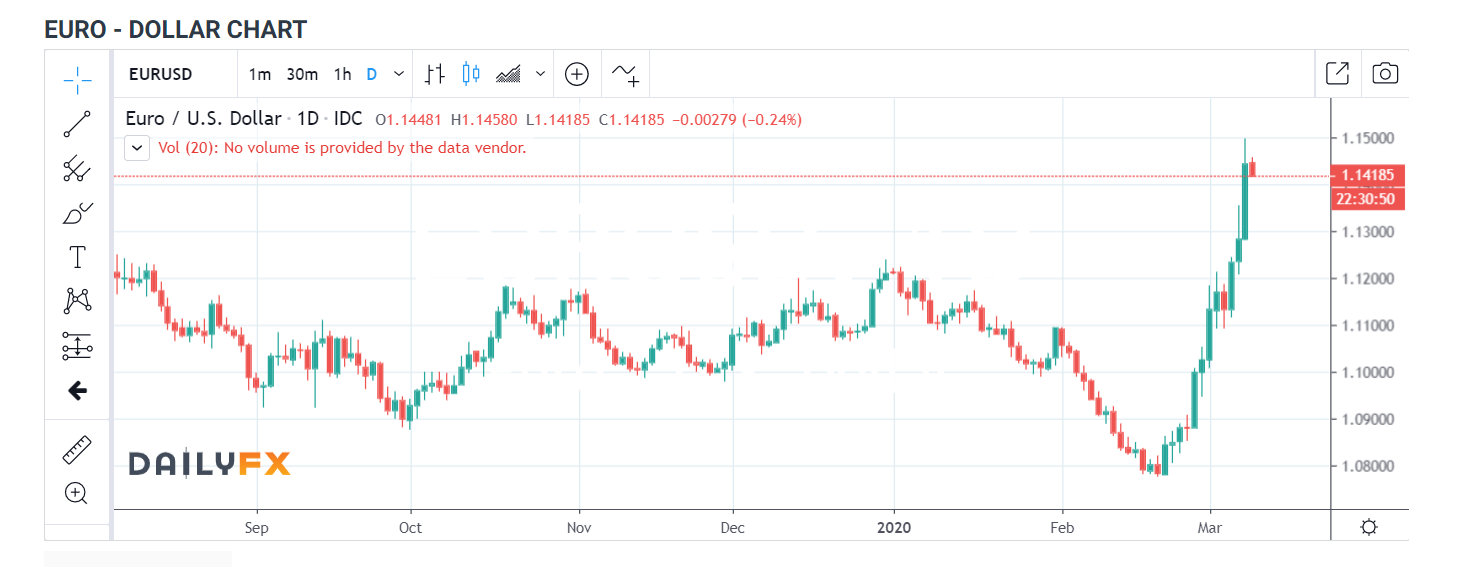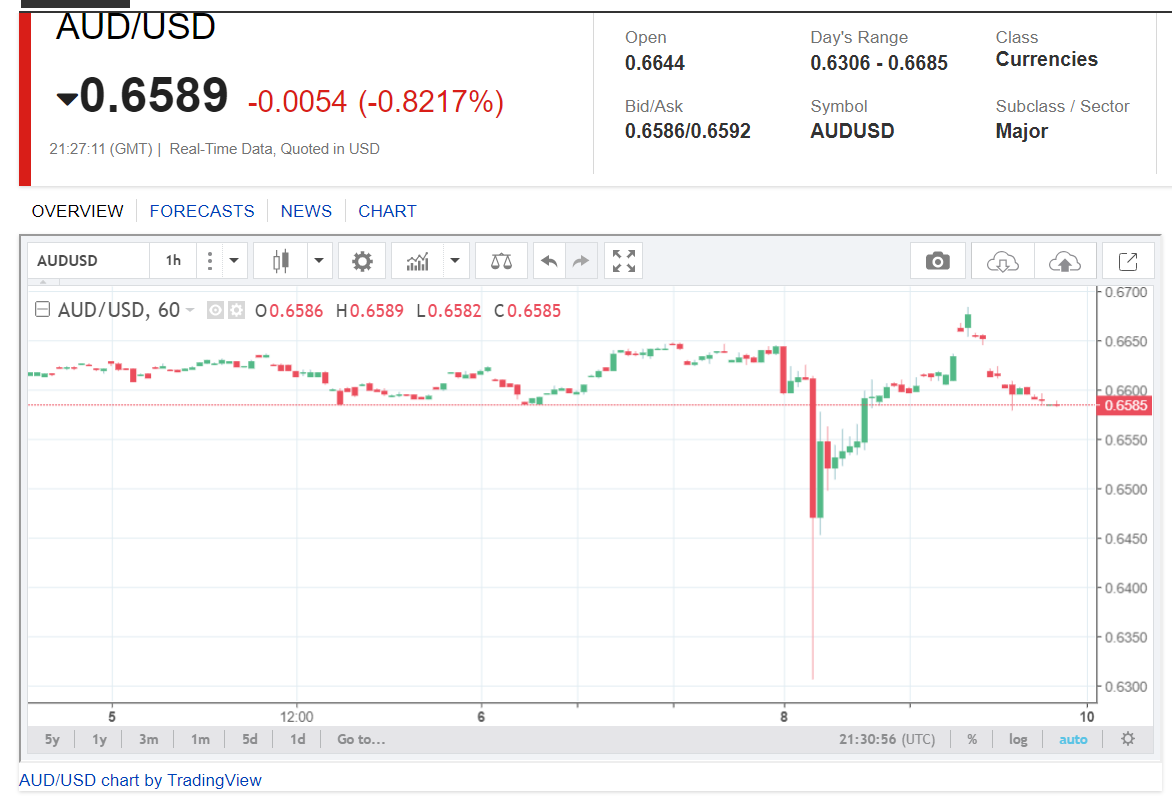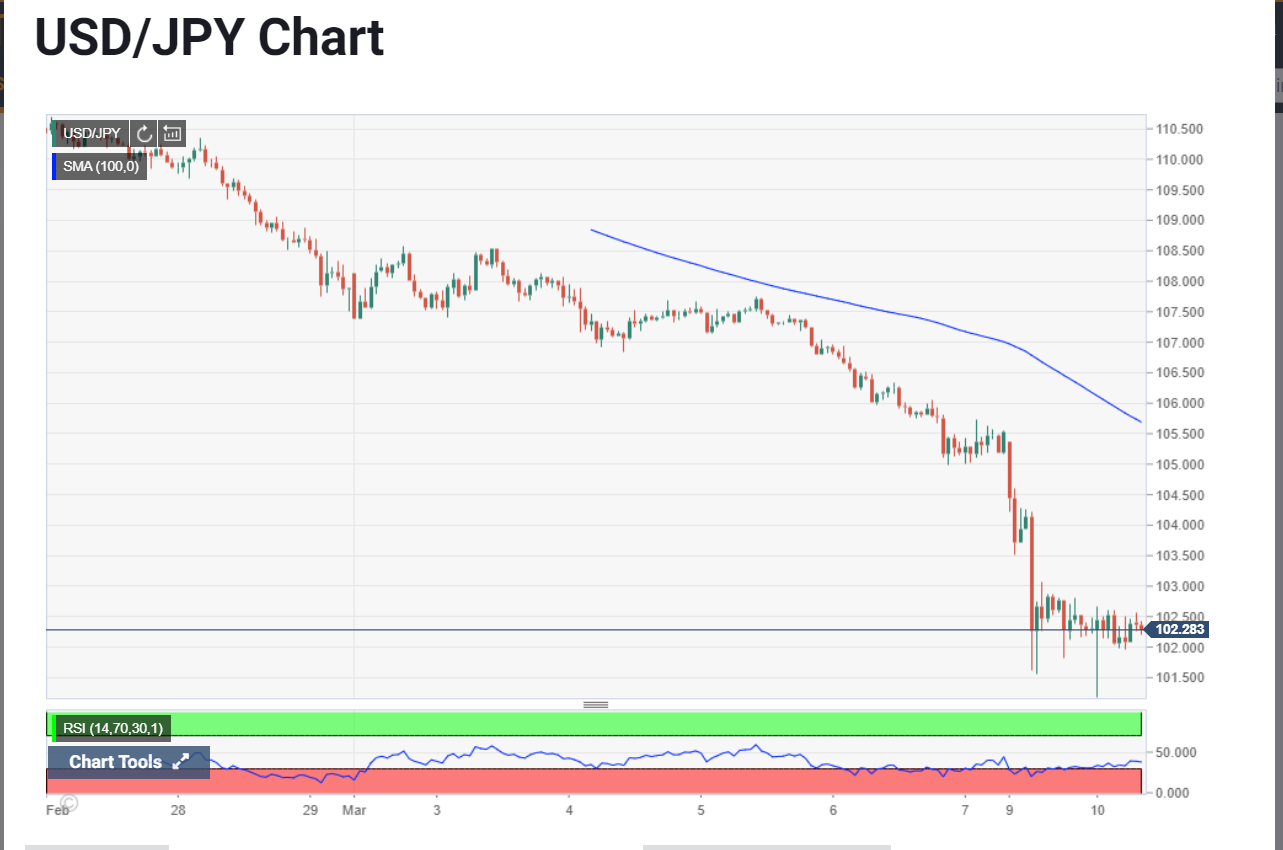Summary: The rapid spread of the coronavirus in the US and the world coupled with a 25% plunge in oil prices triggered by panic selling after a Saudi-Russia supply war erupted saw Wall Street suffer its biggest one-day loss since the 2008 financial crises. In early Asian trade yesterday, FX was hit by flash crashes in the major currencies. The GFC like carnage extended overnight and sent US bond yields crashing. The key US 10-year treasury rate plummeted a massive 26 basis points to 0.55% (0.76%). This sent the Dollar Index (USD/DXY), a favoured measure of the Greenback’s value against 6 major currencies, skidding 1% lower to 94.99 (96.09). The traditional safe-haven Japanese Yen skyrocketed 2.76% up against the Dollar, sending the USD/JPY pair crashing to an overnight and 3-year low at 101.183. In volatile trade, USD/JPY jumped back to 103.00 before settling to a 102.42 NY close. Japanese officials responded to the volatile move. Yoshiki Takeuchi, vice minister for International Affairs said Japan will respond appropriately when necessary to curb excessive volatility in the Yen in accordance with G7/G20 agreements. The Australian Dollar had its own flash crash, plunging 2.6% initially to 0.63111, rocketing to 0.66848, before retreating to 0.6590, down 0.5%. The Euro grinded higher to 1.14948 before slipping to close in NY at 1.1450. Sterling soared to 1.3200 amidst the broader Dollar fall, before ending at 1.3105, a gain of 0.5%. Emerging Market currencies slumped against the Greenback. Against the Russian Rouble, the US Dollar gained 9.38% to 75.00 from 68.55 yesterday.
The DOW tumbled 7.95% to 23,764 (25,815). The S&P 500 lost 7.8% to 2,735 (2,967).
Japan’s Final Q4 (2019) GDP contracted -1.8%, missing forecast of -1.7%, and the previous -1.6%.

On the Lookout: The big drop in US bond yields was not matched by its global rivals. Currently, the US 10-year yield stands at 0.55%, a fall of 26 basis points. Germany’s 10-year Bund yield fell 15 basis points to -0.86%. UK 10-year bond rate lost 8 basis points to 0.15%. Japanese 10-year JGB’s yielded -0.18% from -.015% yesterday. Canadian 10-year treasury rates dropped 19 basis points to 0.53%. Australia’s 10-year bond yield fell 6 basis points to 0.61%. Interest rate traders expect the Fed to respond to the crisis with a more aggressive easing. Yesterday FX trading volumes jumped with most currencies doubling (AUD and GBP). According to a Reuters report, trading volumes in the Euro and Yen were four times its 30-day average through its Refintive platform. Traders jumped to unwind their short currency, long US Dollar trades.
Trading Perspective: The Dollar’s corrective downturn has begun and there is more to go. Further unwinding of speculative long USD bets built over the past months will be seen as US rates drop. The US rate advantage is headed for further eroding. Without its yield advantage, the Dollar cannot go higher. What can’t go up, must come down.
That said, nothing in FX goes in a straight line. We can expect more FX volatility ahead. We look at the various currencies.
EURUSD : The shared currency extended its three-week advance against the faltering Greenback, touching overnight and 1-year highs at 1.14948, before easing to settle at 1.1445. Broad-based US Dollar weakness brought about by the plunge in US bond yields as the coronavirus spread intensified in America lifted the EUR/USD pair.
Speculative short market positioning hit extremes last week. The COT report saw short Euro bets climb to -EUR 114,021 contracts from the previous week’s -EUR 91,507. Which was the biggest speculative short in a year. Its no wonder the Euro has continued to advance against the faltering US Dollar. We look at this week’s COT report to see how the market is positioned in the shared currency.

We may have seen a short-term high on the EUR/USD pair at 1.1500. Overnight, German 10-year yields tumbled 15 basis points to -0.86% overnight in contrast with the 26-basis point drop of its US counterpart. The ECB holds its policy meeting on Thursday. The coronavirus spread in Italy has seen the death tool rise to 463 from 366 on Sunday. These factors should prevent the Euro from climbing above 1.1500 before Thursday’s ECB meeting.
EUR/USD has immediate resistance at 1.1470 followed by 1.1500 and 1.1530. Immediate support can be found at 1.1410, 1.1370, and 1.1340. Look to trade a likely 1.1380-1.1480 range today. Just trade the range shag on this one.
AUDUSD : The Aussie survived its flash crash plunge to 0.63111 before jumping like a kangaroo on fire back above 0.66 cents to 0.6620. AUD/USD then settled to trade in a 0.6580-0.6630 trade before spiking to an overnight high at 0.66848 as US bond yields plummeted.
Australia’s 10-year treasury yield finished at 0.61%, down six basis points from yesterday. This contrasts with the big 26 bp move lower in the US 10-year rate. At the start of 2020, US 10-year yields were at 1.87% with Australian 10-year rates at 1.34%. This gave the US a 53-basis point advantage. Overnight US 10-year rates fell below that of its Australian counterpart. There is now a five-basis point advantage in Australia10 year yields. AUD/USD downside is now limited.

Speculative market position saw net Aussie short bets increase to -AUD 43,852 contracts from -AUD 37,477. Current market positioning further limits the AUD/USD downside.
AUD/USD has immediate support at 0.6570 and 0.6520. Immediate resistance can be found at 0.6640 and 0.6670. Look for a likely range of 0.6560-0.6660. Prefer to buy dips.
USD/JPY plunged in early Asian trade in a flash crash to a 3-year low at 101.18 before jumping in choppy trade to 103.00 before settling in a 102.00-102.70 range. The Dollar is still heavy against the Yen with 16 basis point tumble in the US 10-year bond yield to 0.55%. Japan’s 10-year JGB yield, in contrast dipped 3 basis points to -0.18%.
At the height of the volatile trade, Japan Inc (Japanese finance and monetary officials) warned that they would respond appropriately when necessary to curb excessive volatility in the Yen. The one thing that Japan Inc do not want is an appreciating currency and a falling equity market.
If the USD/JPY sees further big drops and the Nikkei continues to slump, traders may well be warned and vigilant of any Bank of Japan/Ministry of Finance intervention. The last time that I recall they intervened was during the tsunami in March 2011. The BOJ sold Yen to weaken its value. This was followed by the ECB, BOE, US Fed and BOC. The Nikkei and USD/JPY both gained.
This may not necessarily be the case today but as a trader their warning should be heeded if we see further quick Yen appreciation.

USD/JPY has immediate support at 102.00 followed by 101.50 and 101.00. The 101-101.50 level is crucial, and any quick move below may elicit some BOJ action. On the topside, immediate resistance lies at 103.00 and 103.50.
Speculative market positioning in the last COT report saw an increase in JPY short bets to -JPY 56,389 from -JPY 27,221. This would’ve been corrected by the moves in the past two days. We will examine the next COT report which should be due out tomorrow.
Meantime look for another choppy trading session with a likely 101.70-103.10 range today. Just trade the range shag, today. Tin helmets on.












